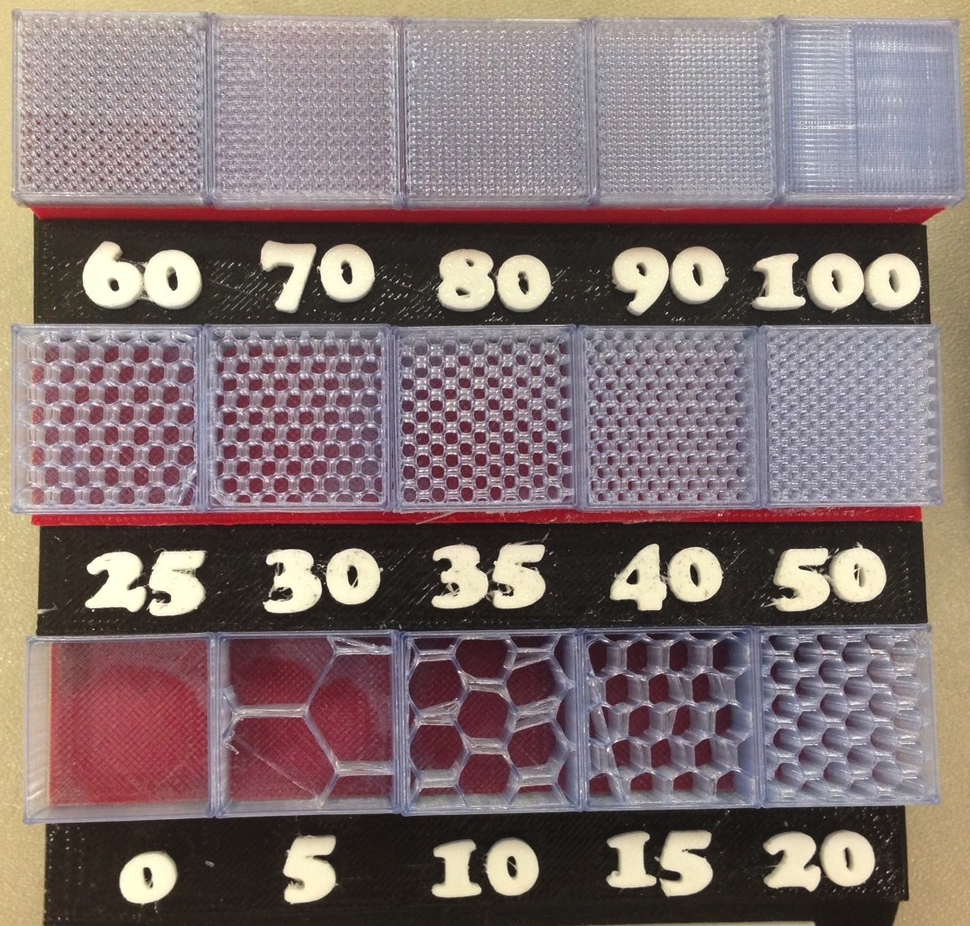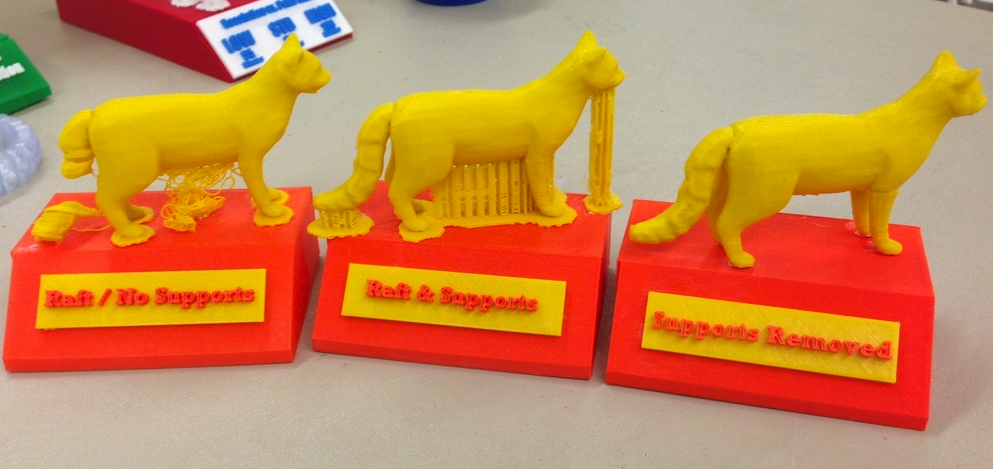 There are a lot of concepts within the desktop 3D printing space which sometimes are a bit complicated to understand. For example, what does a 40% infill density look like compared to a 70% infill? What do 10 shells look like compared to just 3? Then there are the concepts of rafts, supports, and other 3D printing terms that someone unfamiliar with the technology would have no idea what you were talking about if you were to mention these to them.
There are a lot of concepts within the desktop 3D printing space which sometimes are a bit complicated to understand. For example, what does a 40% infill density look like compared to a 70% infill? What do 10 shells look like compared to just 3? Then there are the concepts of rafts, supports, and other 3D printing terms that someone unfamiliar with the technology would have no idea what you were talking about if you were to mention these to them.
I must admit that it took me a while to catch on to all of the 3D printing jargon, yet I still have a difficult time grasping what a honeycomb pattern would look like in the various infill densities. In fact, I still have a hard time trying to decide just how dense I should make the infill on my various 3D designs that I create.
Thanks to one man, named Duncan Smith, my job may have just gotten a bit easier. As part of a series of educational displays that Smith made for the Arcade Library in Sacramento, he has made several very useful 3D printing tools.
“It can be difficult to explain important 3D printing concepts like infill percentage, shells, resolution, and the need for supports,” Smith explains. “Sometimes all you need is a visual aid to make things click.”
My favorite of his tools is the “Infill Percent Display,” which is entirely 3D printable and it displays all of the various infill percentages from 0-100%, in 5% increments, along with a one inch cube that is printed with the corresponding infill, for each. Not only is this a useful tool, but it’s also fun to look at.
In addition to this tool, Smith has also created what he calls a “Number of Shells Display“, which is similar to the Infill Percentage Display, but instead of showing various infill densities, it shows different numbers of shells for printed objects. For those unfamiliar, shells are the outer layers of a print which make the walls of an object, prior to the various infill levels being printed within. The Number of Shells Display shows examples of cubes printed with 1, 2, 3, 4, 5, 10, 15, 20, 25, and 30 shells, providing an example of just how the different numbers of shells not only affect stability of an object but also the translucency.
Smith has also created three 3D printed cats which show different examples of rafts and supports. One of his cat models depicts the creature 3D printed with a raft but without any supports, while another shows it printed with both a raft and supports, and a final print shows the same cat printed with the rafts and supports removed.
“This display illustrates what happens when you print something without supports… what supports and a raft look like… and the final product after the raft and supports have been removed,” he explains.
All of these designs can be 3D printed for free, from Thingiverse. What do you think about these unique, and quite useful tools? Discuss in the 3D Printed Educational Tools forum thread on 3DPB.com.
Subscribe to Our Email Newsletter
Stay up-to-date on all the latest news from the 3D printing industry and receive information and offers from third party vendors.
Print Services
Upload your 3D Models and get them printed quickly and efficiently.
You May Also Like
The Market and Industry Potential of Multi-Material 3D and 4D Printing in Additive Electronics
Additive manufacturing leverages computer-based software to create components for products by depositing either dielectric or conductive materials, layer by layer, into different geometric shapes. Since its birth in the 1980s,...
3DPOD 262: Bio-inspired Design for AM with Dhruv Bhate, Arizona State University
Dhruv Bhate is an associate professor at Arizona State University. There, he looks at structures, materials, and design. Previously, he worked at PADT as well as in the semiconductor and...
3DPOD 261: Tooling and Cooling for AM with Jason Murphy, NXC MFG
Jason Murphy´s NXC MFG (Next Chapter Manufacturing) is not a generalist service; instead, the company specializes in making tooling. Using LPBF and binder jet, the company produces some of the...
3DPOD 260: John Hart on VulcanForms, MIT, Desktop Metal and More
John Hart is a Professor at MIT; he´s also the director of the Laboratory for Manufacturing and Productivity as well as the director of the Center for Advanced Production Technologies....



































